#2/LtJosephF.Harms(Bombardier)
Explore tagged Tumblr posts
Text
B17G #4297904 Lady Jeannette - B24J #4251226 I Walk Alone (1944) (Part Two)


At the 566-ASWB, the on-duty highest ranking officer, and at the 563-ASWB, which was monitoring the action, both were placing calls to their commanders to inform them of the situation. This was quickly passed on to their reporting command, the XIX USAAF. Aboard the B-24, the pilots and crew, who were flying with no light other than the instrument panel and the limited lighting required in the navigator’s compartment and bomb bay, where the switch switcher was waiting to be told by the navigator, the next switches he was to turn on or off. Engine #3 provided the major power to the interior of the plane, including the electric motors that drove the hydraulics which provided the power to operate the chin and tail turrets. Suddenly, their left wing was lit up and loud explosions were heard. The engine suddenly shut down and a fire started within the cowling. At the same time, the bright light ruined the night vision of the pilots and immediately the electrical power died. The pilots immediately switched on the emergency power that was supposed to be provided by Engine #2 emergency generator and even though the power meter showed it was providing the interior of the bomber with emergency power, it was obvious none was being supplied. The emergency power check was one the pilots conducted when preparing to take off. Without that emergency power, they were not supposed to fly. However, the B-24’s top-secret electronics were being constantly updated and each upgrade required more power.

The original power was supplied from large forklift batteries, however, after some mission one night, the top-secret equipment shut down which caused that night’s mission to fail. Upon discussion by the 'genies' who maintained the equipment, they realized the equipment now required additional power. As the normal emergency generator on engine #3 was rarely used, the decision was made without the crew being told, to install a hidden connection on that emergency generator’s supply line, that diverted the emergency power to the top-secret equipment. One night, during a main generator problem, the pilots switched to the emergency power. The voltage flux in the top-secret equipment caused it to fail and they had to shut down the mission early. Upon their return, the 'genies' discussed the problem and decided that the engine mount for the emergency power generator was the same as the main generator, so they replaced the normal emergency power generator with a larger main power generator and at the same time they rigged the power switch so the crew would think they had the required emergency power when in fact it was no longer available. That greatly increased the power available to the top-secret equipment and it would prevent any emergency switching that may damage the equipment. So, without informing the flying crews that they no longer had emergency power if required, they wired the switch to give a false indication. In fact, with the obvious knowledge of the electronics officer, the executive officer, and the commander of the squadron, a decision was made, that the top-secret electronic equipment was more important than the lives of the aircrew.

Hornsby felt the plane begin to buck and want to dive due to the sudden unbalance of power, so he had to gain control and with Casper working the other engine’s power output, he told Casper to set off the fire extinguisher to put the fire out. As Hornsby began to regain control, Casper told him, it was not working and the fire was growing. If it continued, it could break into the wing, melting the wing and setting the fuel on fire, and then the wing would break free and they would fall to their death. Hornsby hollered at the radio operator to get back and warn the crew in the back to get ready to bail out, as the intercom was as dead as the generator. Then, he was to go to the nose and tell the men there to be ready to bail out. He and Casper then made the decision, their only hope was to dive as quickly as they could and build up their airspeed to a point where the fire would be blown out. At that time, their eyes were beginning to adjust to the lack of light, however, the phosphorus dots on the instruments were beginning to fade and if he could not see their altitude, he might dive them into the ground. Casper got the flashlight and used it to shine on the instruments so Hornsby could see them. Due to the engine being out, and the interference of the air stream, the bomber had been bouncing up and down and rocking back and forth. However, he started the dive and as Casper called off the lowering altitude, they were able to blow the fire out, both of them had to pull back on the controls to stop diving and regain as much altitude as they could. While they were doing this, the number four, outboard engine began acting up, probably due to damage occurring at the same time the #3 had been destroyed. Until Hornsby was interviewed by the author, he had always believed what he had been told by his commander when he got back to his unit. They had flown so far to the east that they were over the Rhine River when the German anti-aircraft artillery had destroyed their #3 engine and damaged the #4. He remembered seeing the moon reflected off a big river and he believed the lie he was told. The pilots got the bomber under control, however, they were in a pickle. With no lighting in the bomber and with engine #3 dead and the other hurting, Hornsby knew they did not want to try to cross the Channel. A B-24J did not fly well with an engine gone, it was worse when the remaining engine on the same wing was failing. So, they had to bail out before they got too far to the west. He told Danahy to go back to the nose compartment to check with the navigator to find their location and to tell them while he was going to keep the bomber in the air as long as they could fly west, willing to bail out and crash the plane in Liberated Europe. Casper had to keep the flashlight on the instruments, as the blow buttons would dim very quickly if the light was taken away. The only problem was that he accidentally flashed Hornsby a couple of times and each time, he lost his night vision.

Unknown to the pilots, Sgt Bartho, in the hydraulic-driven nose turret had immediately rotated his turret to the right to see what had caused the explosion. Then, when the power went off all of a sudden, he had no hydraulic power and he could not turn the turret. Bartho was a taller man and when the author interviewed several B-24J nose gunners, they told him that if you were tall it was impossible for you to follow the emergency instructions in case of such a failure. The gunner was supposed to bend down, reach toward the rear of his seat then disengage the hydraulic drive from the gear drive. Then, he had to reach an emergency handle that was clipped to the back of his seat. Once he had the handle, he had to insert the end in a small hole in the bottom of the turret. This would then allow him to hand crank the turret back to its neutral position and allow him to open the turret door to exit the turret. At the same time, in the nose of a B-24J, one of the crew had to be inside the nose, near the turret and he had to open an inside door that had to be open so the hatch door could open and the gunner could get out. At some point, Lt Grey had to have realized Bartho was not able to move the turret, and with the intercom out, he could not communicate with anyone to help. I believe, as the only man who knew what the top-secret equipment was capable of doing, he had been ordered, not to be captured.
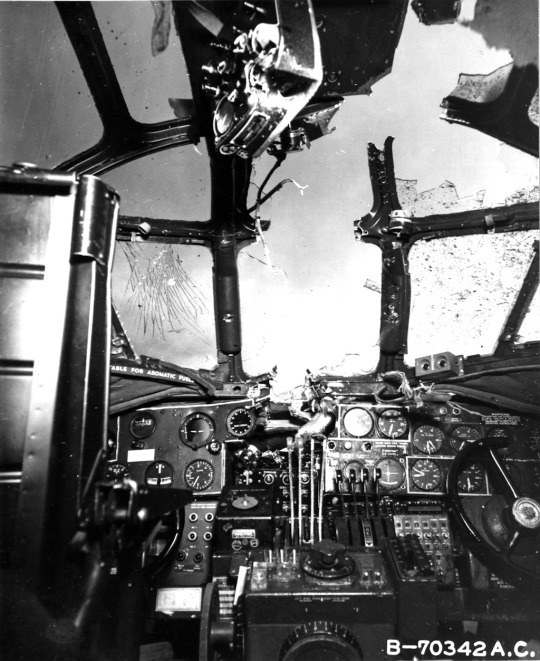
In the cockpit, Hornsby and Casper agreed it was time to bail out, as they did not want to accidentally fly out over the Channel. They knew they did not have the ability left to cross the Channel and they did not want to die in the Channel. It had been about a half hour since the engine damage had happened and when Danahy returned, he said the navigator had no lights, other than a flashlight and he actually had no idea where they were, except they had to have flown far enough to the west, it was time to bail out. Hornsby then gave the order to bail out telling Casper and Danahy that he would stay in for five minutes or until the plane had less than 10,000 feet, and then, he would follow. Casper immediately stood up, opened the escape hatch above the pilots, and bailed out. Danahy and the flight engineer went to the waist. Everyone had their chutes on and they started to drop out using the waist emergency exit. The flight engineer headed for the nose, hollered for them to bail out and he went down into the nose escape hatch, past the nose wheel, and fell free. Back at the waist hatch where Danahy had sat down on the edge with his feet out in the slipstream, Mears asked him if he had seen Bartho. Mears and Bartho were good friends and tonight, they had exchanged their normal positions. Danahy hollered no, he had not and Mears hollered back, that he was going to the nose to check on Bartho. Danahy really did not want to bail out by himself and he tried to pull himself back up, but the slipstream would not let go and it pulled him down and out. That was the last time, any survivor saw Mears, the following being based on what must have taken place in the nose. Mears arrived in the nose and it is obvious that he and Grey continued to work to help Bartho. One has to question the actions of Lt. Grey. He knew, they had been told to bail out, he had his parachute on, and yet, he did not drop down and out of the nose escape hatch. Mears arrived and realized that Bartho must have turned his turret away from its home position, just as the hydraulic power went out. With the intercom out, they would have been unable to communicate. Even though they had been told to bail out both had parachutes on and both were a couple of steps from an escape hatch. Both were staying in the nose and both had to know they were going to die when the B-24 crashed. The author believes, Lt Grey stayed with the bomber as he was the only one aboard, who knew exactly what the electronic equipment was capable of doing and it is most likely that he was ordered to end his life if he thought he might be captured. In the cockpit, Hornsby looked at his watch and when the time was up, he climbed up out of the pilot's escape hatch, slid down and off the bomber, and pulled his zip cord.

In the nearby countryside, the French woke up to the sound of laboring engines, then a sudden shriek as the aircraft went into a dive, followed by an explosion, the sound of the bomber hitting the earth, then another explosion, and all was silent. At the nearby, A-72 American Air Base, the home of the 397-BS, Pvt Barney Silva woke up in his bunk as he heard what sounded exactly as the movies portrayed the diving crash of an airplane. There were two explosions and then, silence. He had just pulled the covers up over his head when the intercom speaker came alive with the announcement, 'Pvt Silva, get your ambulance and report to the headquarters at once. He checked the time and it was just 0230 in the morning of November 10, 1944.

Lt Casper had been the first one out and as he was higher and the wind was blowing he landed the furthest to the west. He had been falling through the sky when he saw dim lights and suddenly he landed on the slate roof of a building. He began to slide down one side and his parachute went down the other. Inside the building, the office of a sugar factory, the night fireman heard something on the roof and sliding tiles. He had been looking out a window to the northwest after hearing the approaching plane. When he heard something land on the roof, it was sliding down the roof, along with some loose tiles. He started toward the door and heard a knock. Casper had slid off the roof and was falling straight down when his parachute shrouds tightened and he came to a stop, standing in front of the door. At the same time, his parachute slid clear and as it fell, he collected it. When done, he knocked on the door, which was immediately opened by a Frenchman. The man could speak enough English to understand Casper and he went to a telephone and made a call. In a few minutes, the telephone rang and the Frenchman told Casper, that the nearby American base was sending a vehicle to pick him up. Danahy and Chestnut had bailed out very close together and landed in a pasture. They immediately got together and heard people talking, a short distance away they saw the doors of some houses open and they walked over, they were invited in and told they were sending someone to a house with a telephone, who would call the nearby American air base to have them picked up.
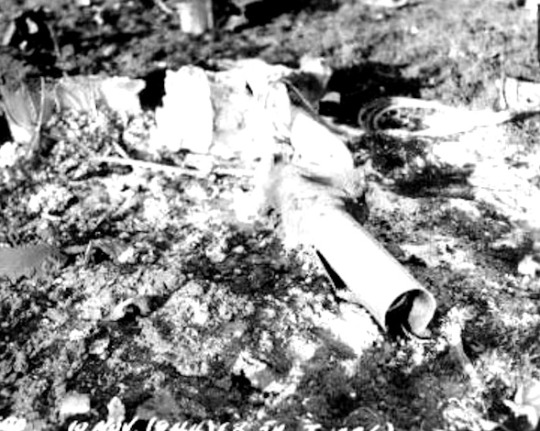
Just before the men began to land, they had been tracking their bomber by the sparks blowing out of the damaged engine, then the sound changed and it was diving to the ground, looking in that direction, most of them saw two flashes and heard the explosions, then there was a flash fire and they knew, 226 had met her end. Danahy landed near a road and the bomber appeared to have crashed a short distance away. He decided, the safe thing to do, was walk away from the crash site until he knew he was safe. He soon came to a stream and heard someone crossing the stream, whistling 'Yankee Doodle Dandy'. He hollered and Chestnut came over and they discussed their situation. They decided they would go back to the road and walk down it, away from the crash site. They had gone a short distance, when they heard someone coming from the other direction, the crash site was still providing a little light and they saw a boy on a bicycle riding toward them. Danahy told Chestnut, he had studied French in school, so he would try to talk to the boy. He stepped out spread his arms apart and began speaking French. He later told the author, that the boy's eyes opened up to the size of a plate, he leaned over and peddled as hard as he could, skirted Danahy, and rode as fast past as he could, down the road.
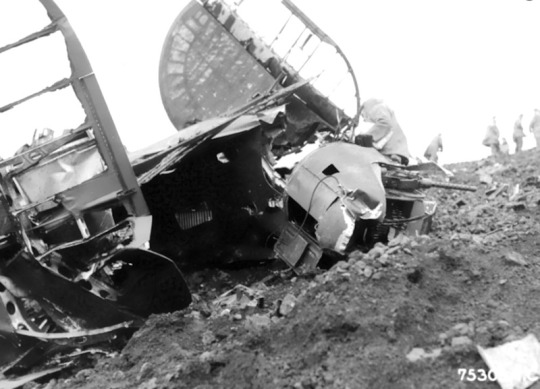
They continued to walk down the road and soon saw a man coming toward them carrying a lantern. The man approached them and they told him, they were Americans and he motioned they should follow him. Soon, they approached a small village and the man went to a house, opened a door, and invited them in, where the man’s wife offered them coffee, with bread and butter. Unknown to them, the boy was hiding in an outbuilding and the man went out and told the boy to go to the next village and tell the policeman about the two men. After a while, the boy came back and told the man to take them to the village hall where the policeman would be. He indicated the two should follow him and he took them to the village hall. There they were told, a man who had a working car would pick them up and take them to the next location. In a few minutes, a small car, kind of like a Model T Ford, pulled up and Danahy remembered, it had the most chrome he had ever seen on a car. The fellow drove a few minutes, stopped alongside a small hill, and indicated the men should get out. As he left the car, Danahy realized, the man was carrying a pistol and instantly, wished he had his own Colt 45. However, after a couple of missions, the crew realized they were just in the way and they never went where a gun would be needed. The man came around the car, pointed the gun at them, and indicated they should start up the hill. Danahy told the author, that he was certain, the man was taking them to the woods on top of the hill to kill them.
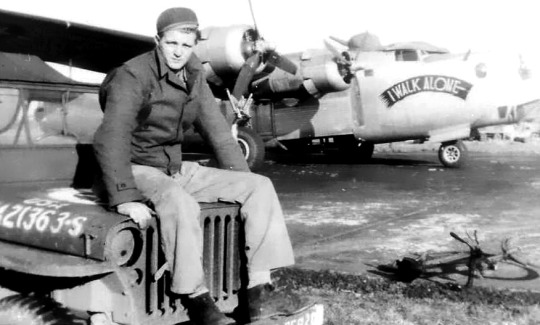
As they approached the hill they could see the trees had a lot of camouflage draped in them and there were several American trailers. As they approached an American came toward them, asked if they were from the crash he had seen. They told him they were and the man told them, there were only two men on duty and they were the radio unit for the nearby airbase. That way, if the Germans flew down their radio beams and dropped bombs, the base would not be damaged. He told them to wait a minute and he would call in and report they were there. In a couple of minutes, he came out and asked the Frenchman, if he could take them to the base. Now, that he knew they were real Americans and not German spies, he was all smiles, and the gun was put away. He agreed to do so and the radio man gave them instructions. Read the full article
#1/LtDanielJ.Gott(Pilot)#1/LtJosephR.Hornsby#1/LtRobertH.Casper#109thEvacuationHospital#2/LtFredericG.Grey#2/LtJosephF.Harms(Bombardier)#2/LtWilliamE.MetzgerJr(Copilot)#36thBombSquadron#397thBomberSquadron#422ndP-61BlackWidowNightFighter#425thNightFighterSquadron#452ndBombGroup#563dAirWarningSignalBattalion#606thMobileHospital#728thBomberSquadron#729thBomberSquadron#730thBomberSquadron#731stBomberSquadron#A-72AmericanAirBase#AN/APS-4#B-17G4297904#B-17GLadyJeannette#BernardLeguillier#BillO’Reilly#BoisdeBuirre#Boulay(France)#CampShanks(NewYork)#Cartigny(France)#Cheddington#ClaudeLeguillier
0 notes
Text
B17G #4297904 Lady Jeannette - B24J #4251226 I Walk Alone (1944) (Part One)
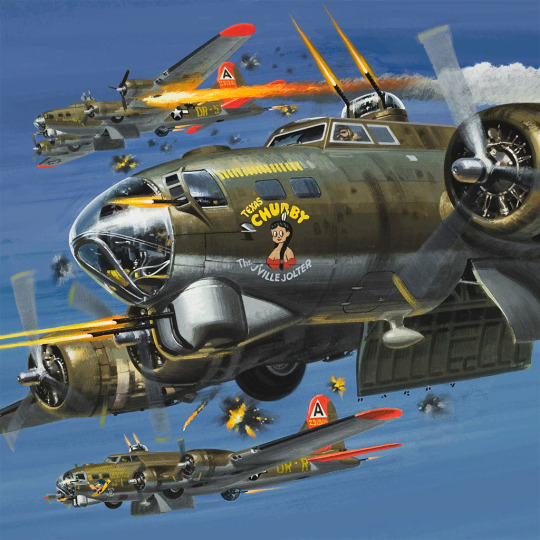
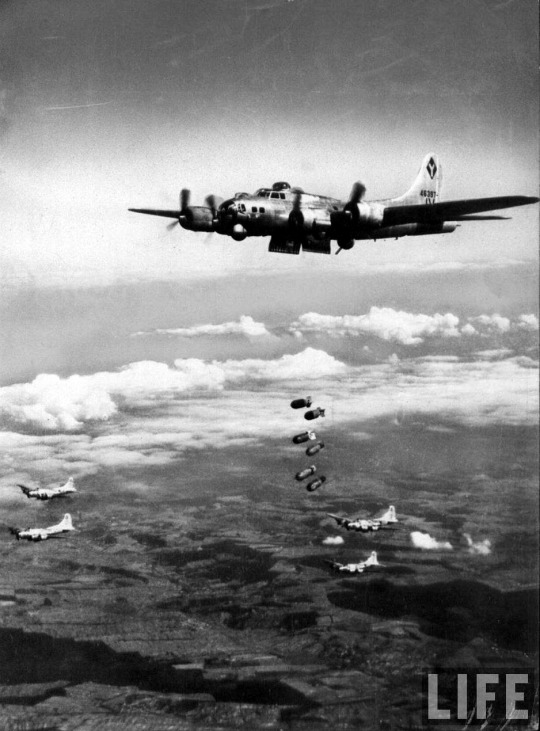
(Document Source:) This is the ultimate and improved version of this archive by Willis 'Sam' S. Cole and Doc Snafu. This is not just a simple republishing. A series of articles laying out the true events behind the crash of the Gott & Metzger B-17G and the creation of my best seller book The Best Kept Secret Of World War Two published a couple of years ago and still available on Amazon. I think it is also interesting to let you know that I have published a second book, also available on Amazon under the title Why We Killed Patton because he had stated that he was going to quit the Army and then, he was going to destroy those bastards who were going to destroy him! In December 1945, when it became known that Gen George S. Patton had told his staff he was quitting the Army so he could speak freely and after the New Year 1946, he was going to tell the American public the truth about what those who were attempting to destroy him had done. He was positive, once that truth was known, he could live freely and it was their careers that would be destroyed. A series of day-by-day articles beginning on Nov 9, 2015, which was the 71st anniversary of the crash of the Lady Jeannette, B-17G, SN: 42-97904. I will describe the shooting down and the crash of two American bombers in France. One was the B-17G #42-97904 (Lady Jeannette), and the other, was B-24J SN:42-51226 (I Walk Alone) which was flying a top-secret night mission while attached to the 100th Group Royal Air Force. The B-24J also crashed in France, early on the morning of Nov 10, 1944, 138 miles from the crash site of the Lady Jeanette. CREW MEMBERS #42-97904 2/Lt Joseph F. Harms (Bombardier) 729th Bomber Squadron - 452nd Bomber Group Eight Army Air Force (Heavy) Air Medal, Purple Heart T/Sgt Russell W. Gustafson (Flight Engineer) 729th Bomber Squadron - 452nd Bomber Group Eight Army Air Force (Heavy) Air Medal, Purple Heart 1/Lt Daniel J. Gott (Pilot) 729th Bomber Squadron - 452nd Bomber Group Eight Army Air Force (Heavy) Medal of Honor, Air Medal, Purple Heart 2/Lt William E. Metzger Jr (Copilot) 729th Bomber Squadron - 452nd Bomber Group Eight Army Air Force (Heavy) Medal of Honor, Air Medal, Purple Heart 2/Lt John A. Harland (Navigator) 729th Bomber Squadron - 452nd Bomber Group Eight Army Air Force (Heavy) Air Medal, Purple Heart T/Sgt Robert A. Dunlap (Radio Operator) 729th Bomber Squadron - 452nd Bomber Group Eight Army Air Force (Heavy) Air Medal + 2 Oak Leaf Clusters, Purple Heart S/Sgt James O. Fross (Belly Gunner) 729th Bomber Squadron - 452nd Bomber Group Eight Army Air Force (Heavy) Air Medal, Purple Heart S/Sgt William R. Robbins (Gunner) 729th Bomber Squadron - 452nd Bomber Group Eight Army Air Force (Heavy) Air Medal S/Sgt Herman B. Krimminger (Tail Gunner) 729th Bomber Squadron - 452nd Bomber Group Eight Army Air Force (Heavy) Air Medal, Purple Heart
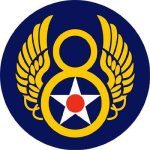
The crew of the #42-97904, B-17G, Lady Jeannette arrived in England on D-Day (Jun 6, 1944). As a replacement crew, the men were assigned to the 452nd Bomb Group, 729th Bomber Squadron (Eight Air Force) until their last mission over Saarbrucken (Germany), then the crash in Hattonville (France), November 9, 1944. On November 9, 1944, the 452nd Bomber Group, was assigned a support mission ahead of Patton’s 3rd Army in the Army's new push into Germany. The day’s targets were located along the German border in the area opposite the region of Metz–Thionville (France). One of their B-17G bombers was the Lady Jeannette, piloted by 1/Lt Donald J. Gott.
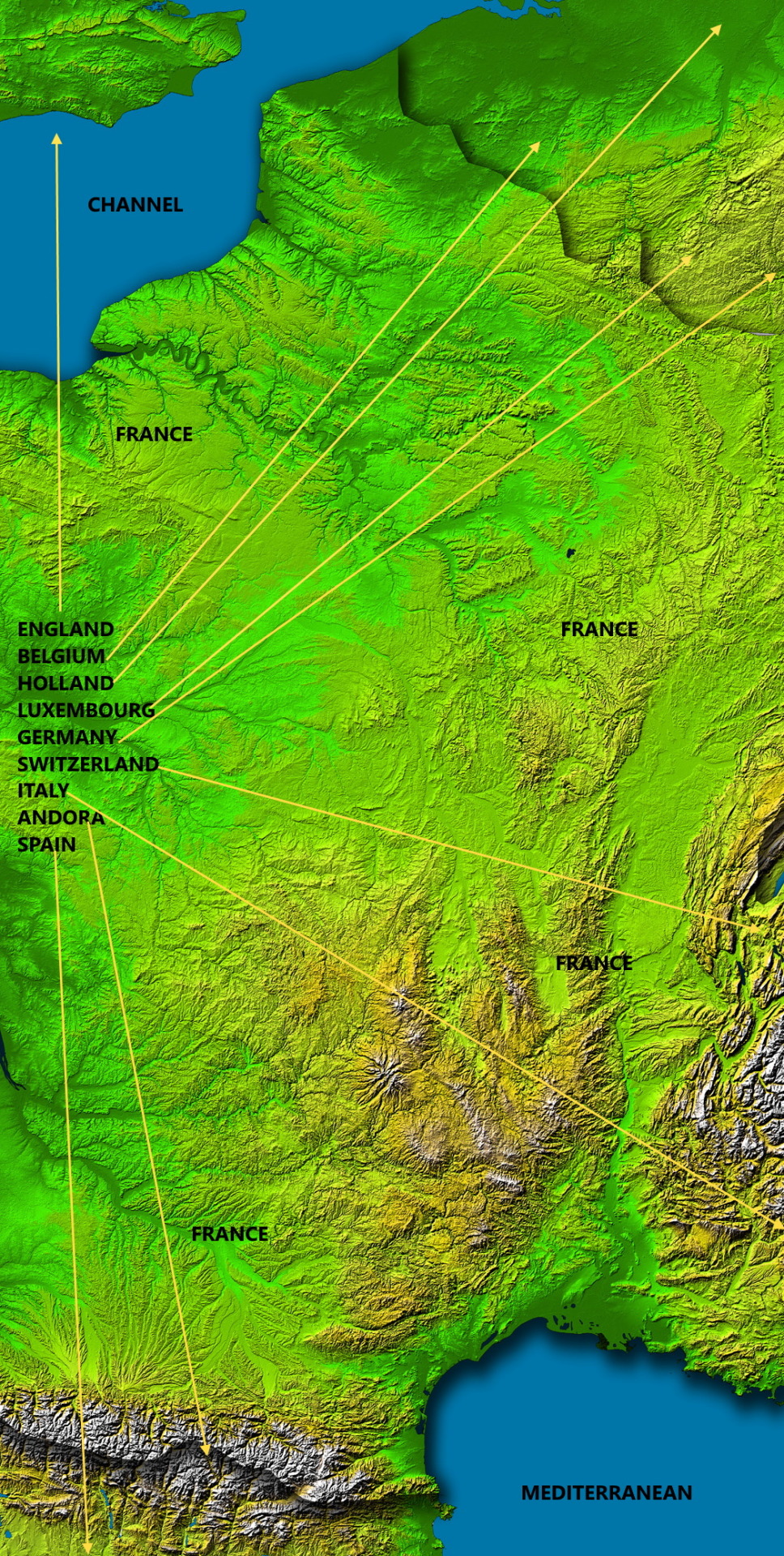
The 452nd Heavy Bombardment Group (USAAF)(45th Combat Wing) was activated on Jun 1, 1943, at Geiger Field (Washington). The group was immediately sorted into four squadrons: 728th Bomber Squadron, 729th Bomber Squadron, 730th Bomber Squadron, and 731st Bomber Squadron while the Cadre formation took place at Salt Lake City Army Base. During training, the troops would be sent to various locations, including Ephrata, Walla Walla, and Moses Lake (Washington); Rapid City (South Dakota); Lincoln (Nebraska) Grand Island (Nebraska); Sioux City (Iowa); Wilmington (North Carolina); Shaw Field (South Carolina); Oklahoma City (Oklahoma); Pendleton Field (Oregon); Redmond (Oregon); Peyote (Texas); and Great Falls (Montana). They would become one of twenty-four B-17 Heavy Bomber Groups in England. On Jan 2, 1944, the 1st wave of the 452-BG's troops embarked from Camp Shanks (New York), many on the RMS Queen Elizabeth liner, arriving in Scotland on January 8. The servicemen experienced cramped quarters, taking turns on deck, and eating meals twice a day. Many flight crews assigned to Station 142 started their journey in a B-17 via Newfoundland and Labrador. The troops spent a month getting used to the British weather, attended classes, and received tips on how to operate their 'Stove Pipe' heaters, and warm beer. Although the 452-BG arrived late in the war, it proved critical timing. On February 5, 1944, the 1st mission was flown, target Romilly (France). After take-off from Deopharm Green (UK-AFB-15), the Group joined the mission stream and crossed the English Channel into France. Over the Channel, each of the gunners tested his weapon and the bomb bay doors were opened to verify if they were operating properly. Their bomb load that day was eight 500-pound bombs in the bomb bay and two 1000-pound bombs, one under each wing. As they approached the IP (Initial Point) of the Primary Target, the Group in front sheared off and went toward the IP of their Secondary Target, the marshaling yards at Saarbrücken (Germany), just across the German border. The mission plan varied little, except they would fly south toward the new target, drop their bombs, and circle around to the east to begin their flight back to base.
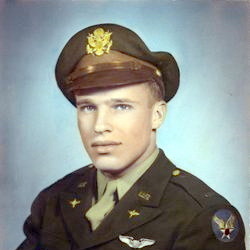
As they left their Secondary Target IP, they opened the bomb bay doors and went on automatic pilot under the control of the bombardier. Unable to change altitude or position, the crews felt most vulnerable as they approached the black clouds of exploding FLAK (Fliegerabwehrkanonen – Antiaircraft Artillery) in front of them. As they approached their Secondary Target, the pilots sat with their hands lightly on the controls as the controls moved automatically by the automatic pilot, ready to take over, if necessary. Each man, in his position, followed the routine of their previous missions, except for the co-pilot, 2/Lt William E. Metzger Jr, who was on his second mission with the Gott crew to obtain combat experience, and the bombardier, 2/Lt Harms, who also was on his
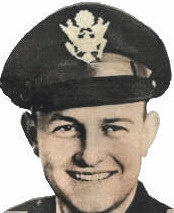
second mission, as a fill-in for the normal Gott crew bombardier, who failed to report for the mission. Each of the gunners scanned the sky for any approaching German fighter, however, their minds were on the bank of exploding German FLAK staining the sky ahead. In their previous 27 missions, the crew had never seen a single German fighter, however, at every target they had seen other B-17s going down and crashing due to FLAK. All they could do was hope that Lady Luck would be with them again. In another B-17, in the formation behind them, 2/Lt Collins, their normal copilot was flying with Lt Metzger’s normal crew, to give them a battle-experienced pilot during their first missions. Lt Collins was watching the Group approach the FLAK cloud and suddenly, he saw a FLAK burst on the right wing of the Lady Jeannette.
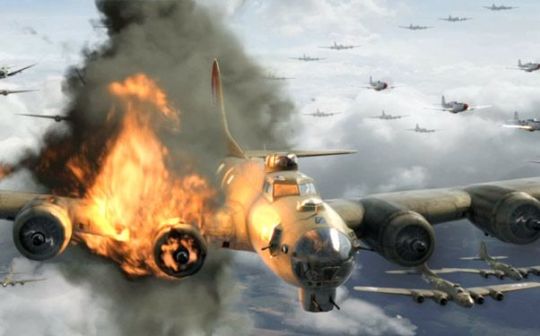

Immediately, it began to move around, as the pilots attempted to regain control. Aboard the bomber, each of the crew experienced the FLAK burst differently. The pilots immediately tightened their hands on the controls, as the plane began to pitch up on the right side, due to the explosion. The men in the nose, Lt Harms, bombardier, and Lt Harland, navigator, were shaken in their seats and turned to see if they could find out what had happened. The intercom was suddenly full of everyone talking at once, asking what had happened or reporting what they had seen. In the rear, the tail gunner, S/Sgt Krimminger, was badly shaken as the tail whipped back and forth and suddenly, he saw a stream of fire to his left. The waist gunner, S/Sgt Robbins, was thrown to the floor and was getting back up to find out what had happened. The radio operator, T/Sgt Robert A. Dunlap, could not see what had happened, but he had his right hand at his radio controls, in order to broadcast what the pilot might order. In the top turret, the flight engineer and gunner, T/Sgt Gustafson, looked to his right to see what had happened and was astonished to see the number four engine, the outboard engine on the right wing was missing. He had seen B-17s that had returned with engines missing, but the engine mount and cowl back to the wing were still there. Their engine, its mount, and the engine cowling were gone all the way back to the wing, leaving a large hole in the leading edge of the wing. He also saw a large fire flowing back into the slipstream and at first, he expected to see the wing was melting and they would crash, but taking a second look, he realized the engine had been blown down and off the wing, taking the fuel line with it, until it broke and the escaping fuel caught fire. Fortunately, the fire was below the wing and it was no immediate threat to the bomber. Gustafson attempted to contact the pilots via the intercom to find it was not working, so he swiveled around to be able to get off his turret seat and tell the pilots the fire was not going to make them crash. As he put his weight on his right foot, suddenly there was another loud FLAK explosion. A fragment of the shell, which had exploded under the numbers 2 and 1 engines, on the left wing, broke through the fuselage, cutting the bomb bay controls, and slicing through Gustafson’s leg, just above the ankle, cutting out an inch and a half of his leg bone. It then broke into the hydraulic oil tank behind the copilot, allowing the hydraulic oil to flow down and over the flight engineer’s parachute.
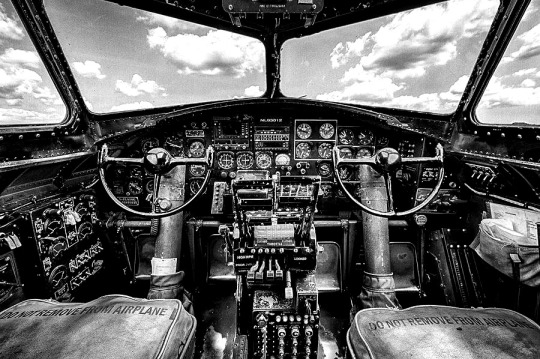
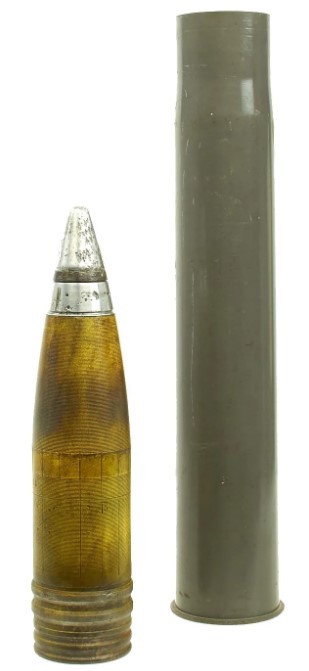
The belly turret gunner, S/Sgt Fross, had been looking ahead in order to count the bombs as they fell, so the bombardier would know all the bombs had cleared and the bomb bay doors could be closed when the Flak shell burst within 15 feet of his turret. He was badly shaken, and small fragments of the shell had broken through the turret and embedded in his skull. However, his training kicked in and he began to turn the turret to a position where he could climb up to the waist. In the radio compartment, a fragment of the German 88 AAA shell, flew up through the floor and struck Dunlap’s left thigh. It continued up through the radio operator’s table and through Dunlap’s right arm, just above the wrist, almost cutting his hand away from the lower arm, leaving it hanging by sinew and muscle. In the rear, Krimminger had released his seat belt and was making his way to the tail gunner escape hatch, when a third Flak shell burst occurred. As soon as the second shell burst, a fragment killed the number one engine, leaving its propeller blade in the flight position, causing a great drag. In addition, another fragment or two flew up into the number two engine, where they blew the cylinder head off two or more cylinders. This allowed engine oil to flow out and turn into smoke that flowed back along the slipstream. At the same time, the engine lost its ability to provide full power and this left the bomber with only two working engines, the number three, inside, engine on the right wing was undamaged, and the damaged number two, inside, engine on the left wing. The sudden change in power and the Flak explosions caused the B-17 to dive out of the formation. Lt Collins saw his crew’s bomber begin to spiral down and out of the formation and to him and all those who were watching, it was going to crash from the damage they could see. There was a large flame streaming back behind the right wing and heavy smoke was flowing from the left wing these men had seen other bombers, with much less damage fail to regain control. Collins called the navigator and told him to mark the position where the Lady Jeannette had been seen and then, he and the pilot began to tighten up the formation. As another B-17 closed into the same position the Lady Jeannette had been in, that B-17 was also hit by Flak, killing one engine. It did manage to maintain formation long enough to drop its bombs and turn with the formation to circle to the east, as they began their western return to their base. This B-17 left the formation and parachutes were seen, as it dove to the earth. Along the same route, a third B-17 that had been less damaged by the Flak over Saarbrucken also crashed.
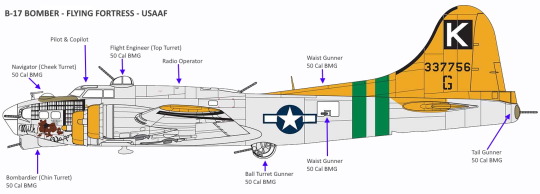
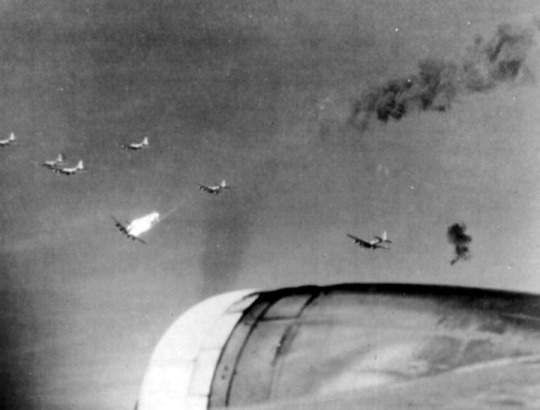

As the Group continued on its bomb run, aboard the Lady Jeannette, the pilot, and copilot struggled with the controls. Sitting on the deck behind them, in agony, Gustafson thought, they were going to crash. However, they were an excellent team and as they dropped in altitude the wings gripped the heavier air and the control panels, allowing the spiraling dive to end. Due to the large hole in the right wing, the number three engine had to be sped up to emergency RPMS to balance the hole. The left wing’s un-feathered numbered one engine props created a great drag that almost overcame the pull the damaged number two engine could provide. The damage was extensive. From both Flak explosions, the bomb bay doors were open, the two outside bombs and the eight bombs in the bomb bay were still aboard and all they had was one and a half working engines to keep the plane above stall speed, so they could keep flying. As control was being obtained, the navigator dropped the nose escape hatch and the bombardier went up the crawlway to the cockpit to see if he could help. By this time, Gustafson had pulled on the sleeve of the copilot to let him know that he was wounded and he had gotten one morphine shot out of the first aid kit and was attempting to inject it. The bombardier realized his problem and helped him open his pants to inject the morphine into his leg. Having realized, when he tried an emergency bomb drop, that the system was no longer working, he moved past the flight engineer and hand-dropped the large bombs under each wing. Then, he went into the bomb bay to try to manually drop the bombs. Realizing this, he tried to kick the bombs out, but their shackles had jammed, so he went back into the radio compartment, as the pilot had requested, to find out the condition of the men in the back. In the waist, S/Sgt Robbins had just gotten to the belly turret to help S/Sgt Fross get out when the second Flak burst took place. He held on, as the plane went through a violent shaking and he felt the plane begin a dive which made him think it might crash. As it settled down, he looked down the fuselage and saw Sgt Krimminger crawling out of the tunnel to the tail with his bell badly ringing and he looked very shaken up. Immediately, Robbins opened the turret hatch and helped Fross climb out. Fross looked and acted like his bell had also been rung and he was hardly able to talk. Realizing he had not seen Dunlap, Robbins told the two to go to the waist escape hatch and prepare to bail out, as he turned and opened the door between the waist and the radio compartment. He was shocked, as he saw blood spattered all around the compartment and Dunlap was collapsing onto the deck. Then, he saw that Dunlap’s hand was hanging by shreds of muscle and skin and blood was squirting out with each beat of Dunlap’s heart. Robbins immediately knelt down to help Dunlap and at the same time, he saw the door from the bomb bay to the radio compartment open and an officer that he had never seen came into the compartment and knelt down to help. Between them, they got a tourniquet on Dunlap’s arm and used a bandage to hold his severed hand to the stump of his right arm with the hope it could be sewn back on and saved. It was obvious, that Dunlap had lost a lot of blood. He must have tried to get up and get help, then spun around several times before falling to the deck. Read the full article
#1/LtDanielJ.Gott(Pilot)#1/LtJosephR.Hornsby#1/LtRobertH.Casper#109thEvacuationHospital#2/LtFredericG.Grey#2/LtFrederickG.Grey#2/LtJosephF.Harms(Bombardier)#2/LtWilliamE.MetzgerJr(Copilot)#36thBombSquadron#397thBomberSquadron#422ndP-61BlackWidowNightFighter#425thNightFighterSquadron#452ndBombGroup#563dAirWarningSignalBattalion#606thMobileHospital#728thBomberSquadron#729thBomberSquadron#730thBomberSquadron#A-72AmericanAirBase#AN/APS-4#and731stBomberSquadron#B-17G4297904#B-17GLadyJeannette#BernardLeguillier#BillO’Reilly#BoisdeBuirre#Boulay#Boulay(France)#CampShanks(NewYork)#Cartigny(France)
0 notes